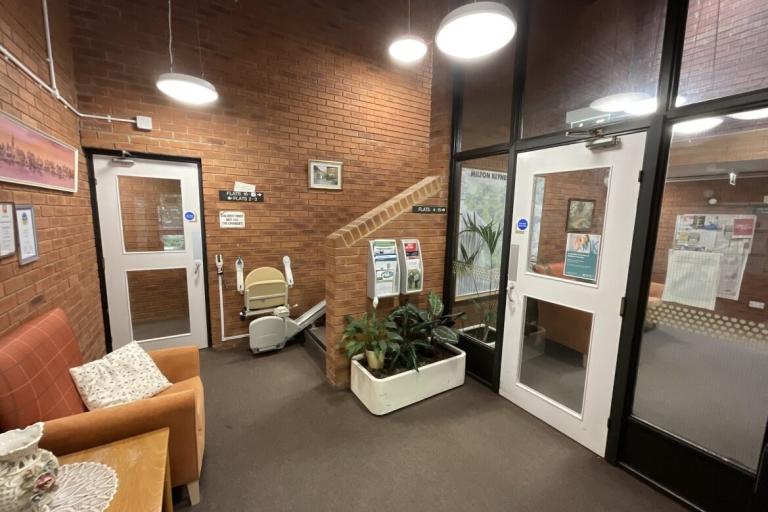Door entry systems
These are generally found in blocks of flats or sheltered housing schemes and control who can gain access to the building. A door entry system is made up of a number of components. For this item all of the costs of repairing and maintaining the system are included. The main two items are the main panel which you will find near to the main door to the building, and a Control system. Visitors use the main panel to contact residents, so they can be identified and then let into the building. Inside each property will be either an intercom system or a telephone which residents use to answer the call. Some systems may have video, where the resident can see who is at the main door. In between the panel and the intercom is a network of wires connecting the two devices. Modern devices may use things like Bluetooth to connect the system. Residents may also have cards or key fobs to be able to access the building. These are controlled by a PAC system - this is the Physical Access Control. This is the software which makes the system work and controls which key fobs work and when access can be gained, for example a Trade Button function which some PAC systems have as an option.
Fire alarm systems (FAS)
The main part of a FAS is the control panel which monitors various communal parts of the building. These systems are installed in buildings which need to be monitored in the event of fire, so you will generally find them in blocks of flats and sheltered housing schemes. This panel can be connected to Fire Call buttons, the red buttons you see on walls, smoke and heat detectors normally found on ceilings and also sprinkler systems which would put out any fire if the system detected a fire. In some buildings the fire alarm system might be monitored by a control centre.
Emergency lighting
This is located in corridors, hallways and staircases and works when there is a power failure to the normal lighting. In the event of a fire, it will be used to guide residents to safety and as a result needs to be checked and maintained on a regular basis. In addition to the lights inside, some sites may have lighting on buildings and in open spaces to light up pathways and access points. You will also see the small white switches in communal areas, which are used to test the lighting.
Smoke and Heat Detectors
In recent years in response to some high-profile fire related incidents the law around fire detection and prevention has been strengthened and landlords must now install fire detectors in their properties to protect their tenants and leaseholders. These can be connected to main building fire alarm systems or be independent for a single property. Regulations require landlords to inspect and test this equipment once a year.
PAT testing - annual testing
PAT stands for Portable Appliance Testing. The easiest way to describe equipment that has to be PAT tested is that if it has moving parts, a cable and is plugged into a power supply then it’s likely to need to be PAT tested on a regular basis. Landlords have to risk assess equipment based on where it is located and how much it is used and ensure that adequate testing is completed. For high use equipment such as kettles in sheltered schemes and washing machines this may be every 3 to 6 months. Other equipment such as television in Common Rooms may only need to be tested once a year. Luckily, a PAT test is relatively cheap to complete, normally costing pennies per item. Some PAT tests are completed by some trained caretakers.
